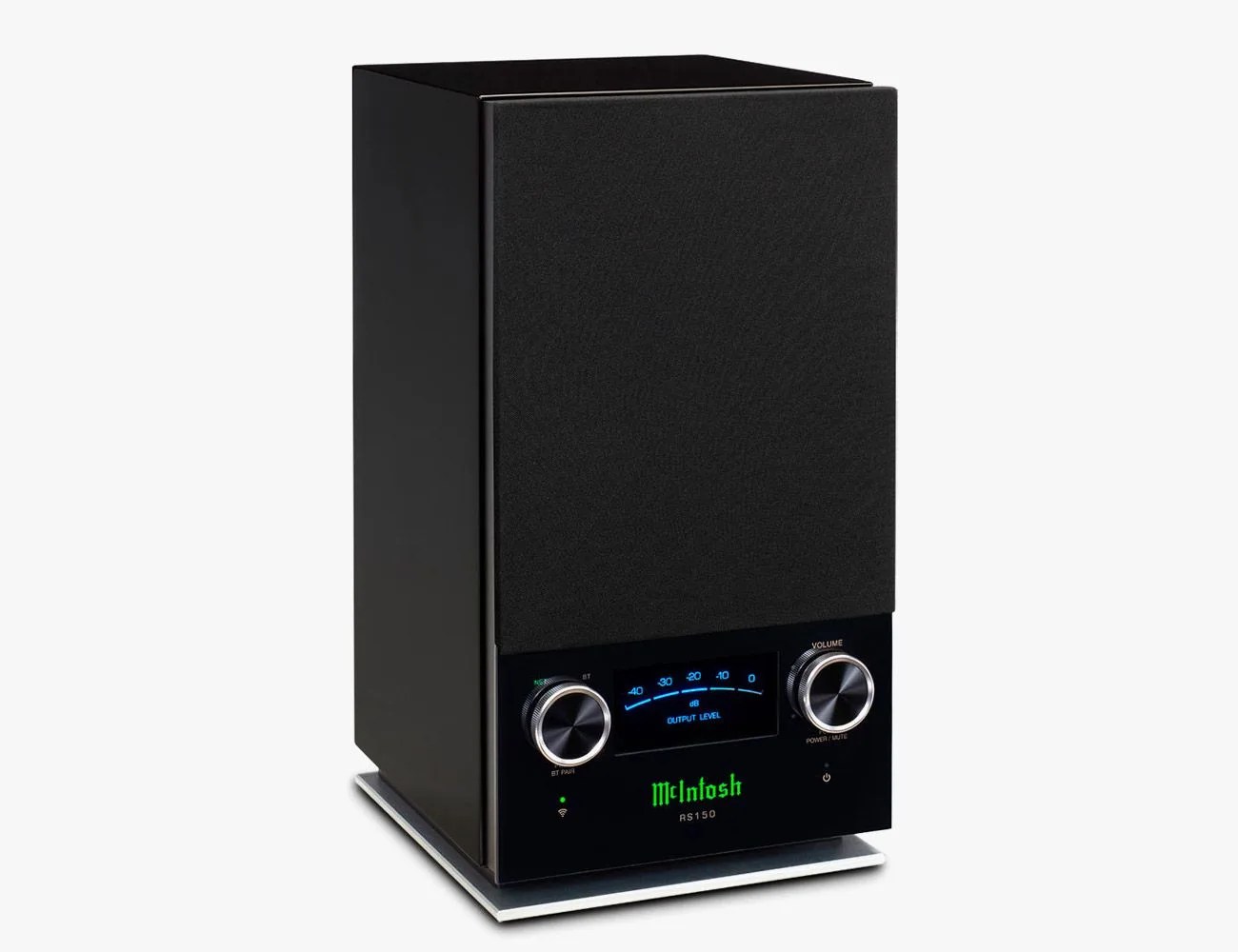McIntosh doesn’t make cheap stuff. Most of its turntables, amplifiers and other audio components cost at least $5,000 (and often a lot more), but not everything the American audio company makes is as out of reach. The RS150 ($1,200), for example, is its newest and most entry-level wireless speaker. It’s still expensive for sure, but if you’re somebody who values great sound quality and a truly gorgeous aesthetic, then the McIntosh RS150 is a dream of a wireless speaker. If you can stomach the still-steep cost.
The McIntosh RS150 is an all-in-one wireless speaker that, well, works very similar to other wireless speakers out there. You plug it, connect it to Wi-Fi and then you stream music to it via your laptop or smartphone. But what makes the RS150 different from, say, something like the Sonos Five (which is one of its closest competitors), is its style. And yes, its sound.
The RS150 is distinctly McIntosh. Everything about it — from the signature blue power meter to the green illuminated logo, the black glass front panel to the large tactile knobs — is in line with the hi-fi company’s other high-end (and super expensive) audio products. Unlike other wireless speakers that are designed to blend into your home and hide, like a Sonos, the RS150 is designed to stand out, shown off and be admired.
Released in late 2021, the McIntosh RS150 is a new-and-improved version of the company’s now discontinued RS100. The RS150 shares a similar design as its predecessor, but McIntosh gave it new guts, twice the power (now 120-watts) and support for every major streaming technology, including Spotify Connect, AirPlay 2, Chromecast, Tidal Connect and Roon. (It also supports Bluetooth, so your friends don’t even have to connected Wi-Fi to quickly get the music going.) Basically, it’ll work for you.
 Tucker Bowe
Tucker BoweAs far as sound, the RS150 is a beast. It supports lossless quality audio and if you’re a Tidal HiFi subscriber, it’s even compatible with its high-resolution tracks (up to 24-bit/192kHz with Kbps). The two-way speaker divvy ups its 120-watts of power between its tweeter (gets 30 watts) and and its 5.25″ woofer (gets 90 watts) — and if you want it to shake your house, it can. (You can also quickly turn the bass down via the Settings.)



